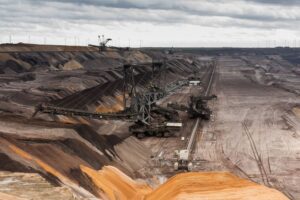Top China Stocks To Invest In for a Decade Of Growth Ahead
![]() Charlie Youlden, November 6, 2025
Charlie Youlden, November 6, 2025
Beyond the Magnificent Seven: Why China’s Market Deserves a Second Look
Diversification is a term most investors know well, yet it means something different to almost everyone. For some, it’s about spreading capital across asset classes like equities, bonds, and commodities. For others, it’s about gaining exposure to markets around the world. One market that continues to attract attention is China. The SSE Composite Index, often seen as China’s version of the S&P 500, has delivered strong returns this year, up around 28 percent since its April correction, trailing slightly behind the S&P 500’s 36 percent gain. However, it’s important to remember that much of the US market’s performance has been driven by the “Magnificent Seven,” a small cluster of mega-cap tech companies.
For investors heavily weighted toward the US, China’s tech sector may offer an intriguing long-term opportunity. The country is positioning itself as a global leader in innovation and clean energy, and that shift is beginning to shape its next growth cycle. In 2024, according to the International Energy Agency, China invested about A$625 billion into renewable energy, more than any other nation.
This massive build-out of clean infrastructure is not just an environmental milestone; it’s also an economic one. By lowering energy costs, China is giving energy-intensive industries like artificial intelligence and data centers a major competitive edge. Deloitte estimates that by 2026, AI-related data centers could account for 6 percent of the nation’s total electricity consumption.
What are the Best ASX Stocks to invest in right now?
Check our buy/sell tips
Inside China’s Energy Strategy
China’s economy tells an interesting story when viewed through the lens of energy investment. Roughly 4.4 percent of its GDP is directed toward energy projects, compared with just 2.9 percent globally. This higher allocation is not just about keeping the lights on it reflects China’s strategic intent to build a long-term competitive advantage. The country is now leading the world in nuclear power development and renewable energy expansion, forming the backbone of what can be seen as a new technological moat.
China’s Clean Energy Push Is Quietly Powering the Future of AI
To understand why this matters, consider the economics of artificial intelligence. Energy is one of the largest costs in AI, both for companies and consumers. The cost per task, how much energy is required to train or run a model, directly affects profitability. By investing heavily in renewable and nuclear infrastructure, China is creating a “full-circle” clean energy hub capable of powering mega factories and data centers at lower long-term costs. While this strategy demands significant upfront capital, it positions China to deliver cheaper energy over time, effectively reducing the cost per unit of output for high-performance computing and advanced manufacturing.
The result is a structural advantage that can lift margins and strengthen the competitiveness of Chinese technology firms in the years ahead. If market volatility creates an entry point, these names could represent some of the strongest long-term growth stories in China’s evolving technological ecosystem.
Alibaba: China’s Digital Powerhouse Bridging E-Commerce and Cloud
Alibaba Group, headquartered in Hong Kong, is one of China’s largest and most diversified digital commerce and cloud service conglomerates, often compared to Amazon for its scale and business model. The company operates primarily as a marketplace connecting buyers and sellers, earning fees from each transaction, while also generating additional income through advertising and digital services. Its core e-commerce and advertising operations account for roughly 60 to 65 percent of total revenue, with cloud computing contributing between 10 and 12 percent.
Over the past year, Alibaba has sharply increased its capital expenditure—now three times higher than a year ago, as it reinvests aggressively into artificial intelligence infrastructure and data center capacity. This renewed focus on long-term growth is evident across its e-commerce and Cloud Intelligence divisions.
In Hebei, Alibaba’s 1-gigawatt data facility operates entirely on wind and solar energy, powering its Qwen AI models. According to the International Energy Agency, this renewable setup has cut the facility’s heating and cooling costs by 50 percent, reducing overall energy operating expenses by 28 percent year-over-year. The efficiency gains have supported a 60 percent rise in AI-related revenue in the first half of 2025, as reported in company filings.
Tencent: The Super-App Giant Powering China’s Digital and AI Revolution
Tencent is China’s largest internet and technology conglomerate, often described as a blend of Meta, Apple, and Activision rolled into one ecosystem. The company connects more than a billion users across social media, gaming, fintech, and digital services. At the heart of its model is WeChat, a super-app that combines messaging, payments, and social networking, forming one of the most powerful digital ecosystems in the world.
Tencent Games is the world’s largest video game publisher and a key driver of its growth, alongside the company’s fast-expanding cloud and AI operations. Financially, Tencent continues to demonstrate strong fundamentals, with rising free cash flow and operating cash generation.
A major part of Tencent’s long-term moat lies in its commitment to sustainable AI infrastructure. The company has pledged to power 100 percent of its data centers with renewable energy by 2030, achieving 70 percent by mid-2025. In 2024–2025, Tencent retrofitted its Guizhou facilities with on-site solar and hydro capacity, reducing power costs by 35 percent for AI workloads such as its Hunyuan large language model. According to Wood Mackenzie, this initiative saved roughly A$200 million annually and lifted EBITDA margins by an estimated 5 to 7 percent as AI inference demand surged. Tencent’s data centers now deliver 20 percent more compute per kilowatt-hour than in 2023, underscoring the company’s ability to blend scale, innovation, and energy efficiency into a durable competitive advantage.
Blog Categories
Get Our Top 5 ASX Stocks for FY26
Recent Posts
Webjet Sinks 22 Percent After Softer H1 Results and Weak Domestic Demand
Webjet Falls 22 Percent After H1 Revenue Dips and Domestic Flight Demand Softens Webjet (ASX: WJL) opened down 22 percent…
Javelin Minerals Jumps 2,900 Percent on Capital Consolidation
A Sharper Share Register Sets Javelin Minerals Up for Its Next Corporate Stage Javelin Minerals (ASX: JAV) surged an extraordinary…
Why Are Droneshield Shares Dropping and Should You Be Worried
DroneShield Selloff Tests Nerves, But Fundamentals Tell a Different Story DroneShield (ASX: DRO) experienced a sharp selloff this morning that…



